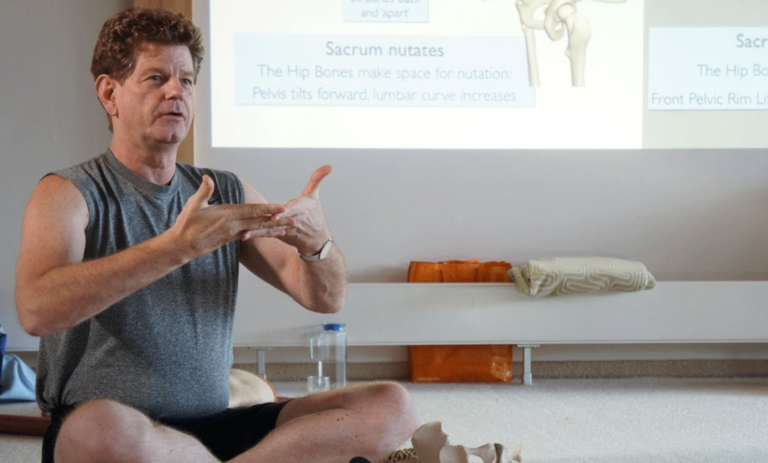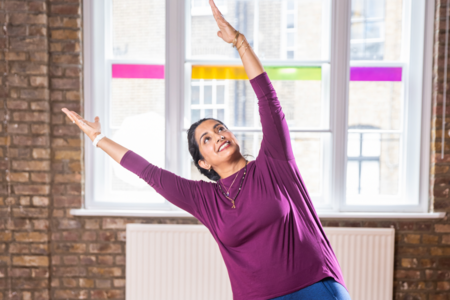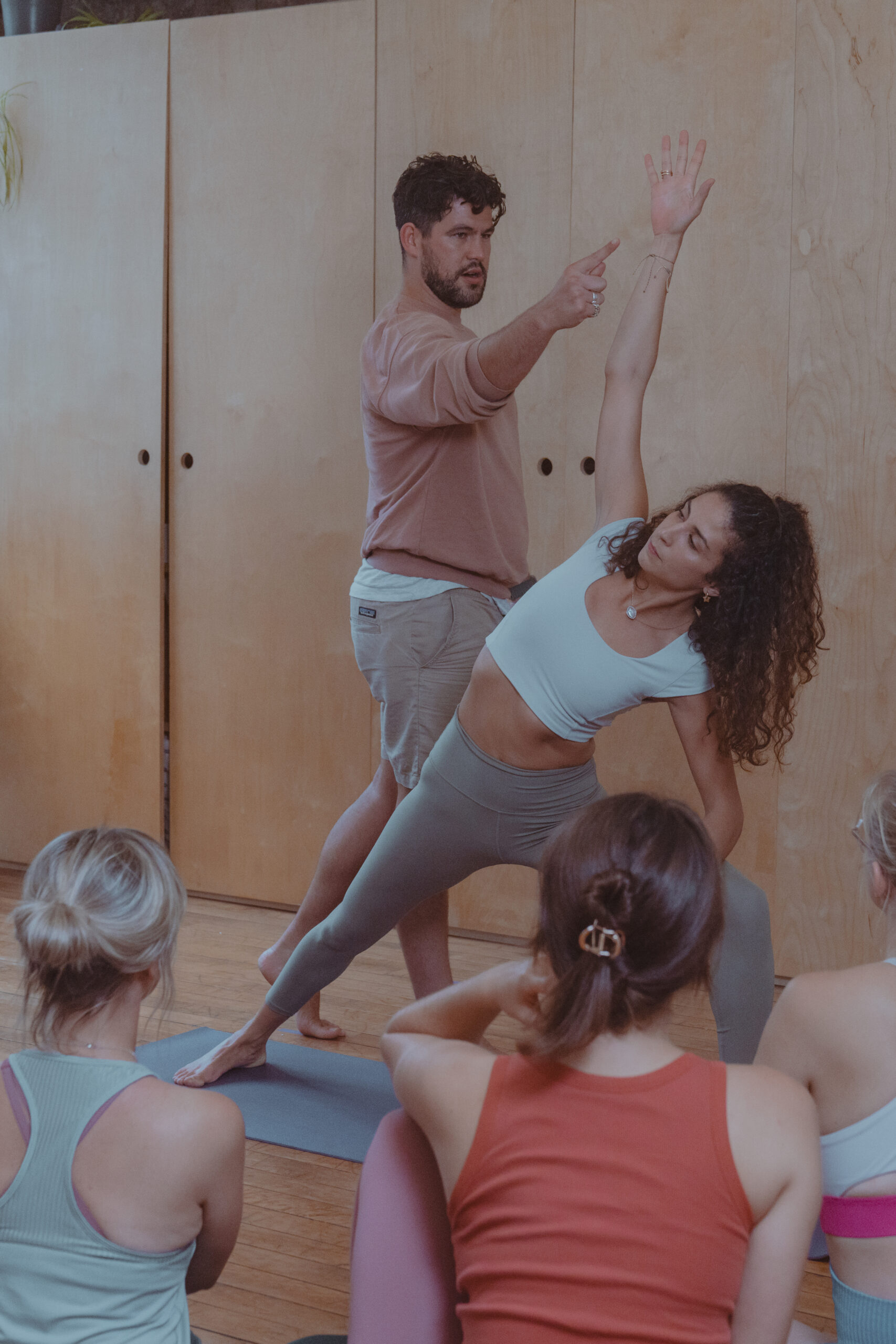Implicated in hip and back pain and central to breathing, posture and movement, the psoas is a fascinating muscle, which used effectively can promote healthy, sustainable movement in our practice. Doug Keller, known internationally for his work in therapeutic yoga applications, shares insight on the psoas muscles and the core.
The psoas is the deepest and one of the largest muscles in the body. On each side of your lumbar spine, it attaches to the vertebrae and stretches over the hip joint-like the strings of a violin stretching from the neck over the bridge-to attach at your femur (inner thigh).
You use the psoas when you walk: It initiates every step you take by exerting a powerful pull on your leg at your inner thigh. It also plays a critical role in forward bends, working in tandem with your abdominals to flex your spine.
Especially important, the psoas provides structural support for the curves of your spine. In fact, it runs so deep that when you’re lying down, your abdominal organs literally sit on top of it, which is why the psoas can have a profound effect on the appearance of your abdomen. Thanks to the way the psoas contracts to flex your legs toward your spine, it’s almost impossible to avoid tightening the psoas in any abdominal exercise. And this can be a problem unless you actively incorporate poses and techniques that release and lengthen your psoas.
Surrounding the psoas you’ll find what is most commonly referred to as the core-three layers of muscle that provide much-needed control and support for the movements of your spine.
First, the outermost layer consists of the abdominals, which, in addition to moving the torso into forward bends, are also involved in twists. The rectus abdominis is the most visible member. It gives you that six-pack look and is emphasized in many popular abdominal routines. The rectus abdominis does make your belly look trimmer by providing support for your abdominal organs, and its active function is to bend the spine forward. It’s worked strongly in poses such as ardha navasana (half boat pose) and arm balances such as bakasana (crane pose).
The other members of the outermost layer are the internal and external obliques. These start at the side and front body at the ribs and sternum, and wrap around the front torso to the pelvis. Their primary function is to twist your torso as well as to bend it sideways. They join with the rectus abdominis to add power to your forward bending. The obliques have a protective function in twisting: they ensure that the spine twists evenly, so that the vertebrae do not turn too strongly in any one place and injure an intervertebral disk. You will find them at work in poses such as marichyasana III and ardha matsyendrasana (lord of the fishes pose). The obliques also get a workout and a stretch in lateral sidebending poses such as utthita trikonasana (extended triangle pose).
The second, or middle, layer plays quite a different role. It supports your spine by bracing it, especially when you’re picking up something heavy. This layer is really a system of muscles whose prime member is the transverse abdominis. These muscles wrap around your torso-from back near your lumbar spine around to the front-covering your entire abdomen from sternum to pubic bone. They’re often described as a muscular corset. The transverse abdominis works in combination with the diaphragm and pelvic-floor muscles to pressurise your torso, protecting your spine from stressful loads.
To feel this system at work, take a small breath in and then hold it; tense the abdominals as though you were going to lift something heavy, and firm your pelvic floor (as though you were trying to “hold it” on the way to the bathroom). These actions firm the entire torso, supporting your lumbar spine in particular. They’re at work whether you’re a weightlifter who grunts during a heavy lift, or a yogi who uses the ujjayi breath and the bandhas to steady your core for a challenging pose. Your transverse abdominis works strongly in poses such as plank pose and chaturanga dandasana (four-limbed staff pose).
Finally, though you might not think of them as core muscles, the tiny muscles that fine-tune the movements of your vertebrae make up the deepest layer. The powerful river of the psoas flows right alongside these muscles.
If the psoas is like a river flowing through the core, the transverse abdominis forms the sturdy riverbanks.
The support of the transverse abdominis strengthens the action of your psoas. When the torso is held steady by this corset of muscle, the pull of the psoas acts powerfully on the leg and hip. But if the transverse abdominis is weak (if the torso is not pressurised and held steady by the transverse abdominis), the psoas will pull your lumbar spine out of alignment and into an exaggerated concave curve-when you’re walking, doing your abdominal exercises, or even just standing or sitting-as it drags the front of your vertebrae toward your hip.
Therein lies the danger of many core workouts: If your transverse abdominis is weak, your psoas will pull too strongly on your spine. A prime example of the danger comes from doing exercises such as leg lifts. The transverse abdominis should do the job of holding your spine steady while your psoas and thigh muscles lift and lower your legs. Your effort to maintain a neutral curve in your spine throughout the exercise is what gives your abdominals a workout. Your transverse abdominis tightens to prevent your psoas from pulling your back into an exaggerated arch as you lift and lower your legs.
But the exercise essentially pits your core muscles and psoas against each other. The problem is that your core is most often no match for the combined power of your psoas and gravity. The end result is that tremendous pressure is placed on your lumbar spine, which causes your low back to overarch and can lead co low-back pain or even to injury.
The good news is that it is possible to work your core without stressing your psoas. And it doesn’t necessarily take more abdominal work, but rather smarter work. If we can learn to pay close attention to lengthening the psoas, these muscles can support a posture that is supple and tension free while developing core strength, both on the mat and off.
Doug Keller joins us 6 March 2021 for his online workshop “the opinionated psoas“. Click here to book.










